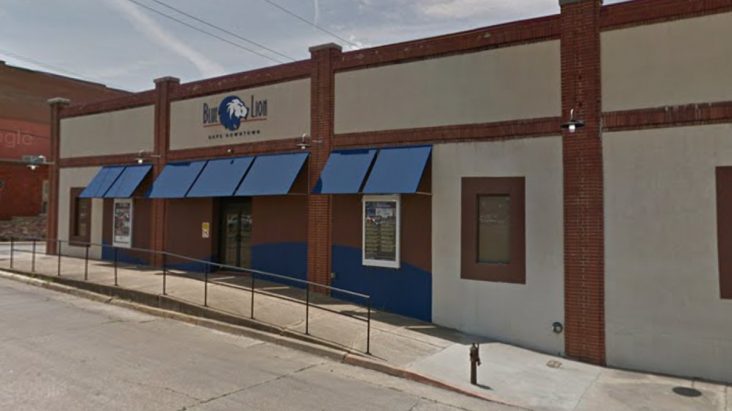Fort Smith administrator details budget sources for Blue Lion lease deal
by April 14, 2021 5:14 pm 1,093 views

Funding for the city of Fort Smith’s new lease of the Blue Lion facility will be split among five city funds with the city’s water and sewer operating fund providing the largest portion of the funding.
The Fort Smith Board of Directors approved a resolution April 6 authorizing an agreement with the Board of Trustees of the University of Arkansas wherein they would assume the lease of the Blue Lion facility at 101 N. Second St. in downtown Fort Smith. The board approved $118,022 be added to the 2021 budget to pay for the lease for the year and for upgrades. Of that, $30,000 would go to the purchase of equipment at the facility that is owned by UAFS and another $20,000 for dais, tables and audio/video. It also includes $9,000 for nine months of utilities; $1,350 for nine months of property insurance and $9,000 for nine months of janitorial services.
The UA has leased the facility as the Blue Lion at UAFS Downtown since 2012. They paid an initial payment of $15,005 and made monthly payments of $5,408 in a 15-year lease to own agreement with the Central Business Improvement District (CBID), which owns the building, city records show. At the end of the 15 years, the university had the option to purchase the building for $10.
The city will pay monthly rent on the facility of $5,408. Through the end of the lease agreement in April 2027, the city would make 73 payments totaling $394,784. At that time, the city will have the option to purchase the building for $10. Total Assessment Services Corporation, a private contractor used by the Sebastian County Assessor’s office, set an appraised value on the property, which is adjacent to the city-owned parking lot that serves the Riverfront Pavilion, in 2020 of $553,589.
Budget cost allocation for the year will come from the city’s general fund (28% or $33,046.16); street sales tax fund (9% or $10,621.98); street maintenance fund (8% or $9,441.76); water/sewer operating fund (37% or $43,668.14); and solid waste fund (18% or $21,243.96).
“The City determined the breakdown of funding for the Blue Lion through the 2021 Operating Budget. … The funding allocation percentages for the Board are determined based upon the general workload and departmental projects that go before the Board each year. This methodology is an accepted practice in public sector finance. Additionally, the Finance Department will be hiring a firm to update the allocation plan very soon,” City Administrator Carl Geffken noted in a statement to Talk Business & Politics.
Though the city would use the space primarily for board and commission meetings, they also hope to use some of the space for permanent office space for the Advertising and Promotion Commission, moving them out of the Miss Laura’s Visitors Center, which would allow Miss Laura’s “as a proper tourist location,” Geffken said. The city also could rent the facility to outside groups for meetings and events.
The city has held its board of director regular meetings at the Fort Smith Public School’s service center on Jenny Lind Road. The city paid $3,000 a year for use of that building but had received notice in fall 2020 that they would not be able to use that building after the pandemic ends.
The board of directors has in the past held its study sessions at the Fort Smith Public Library. During the COVID-19 pandemic, the city has used the Fort Smith Convention Center’s exhibit halls for board of director study sessions and regular board meetings. Many city boards and commissions also have used the convention center for meeting space during the pandemic.
The vote to approve both the rental agreement and the budget adjustment passed six to one with Director Neal Martin opposing the actions because of the cost to the city.
The Blue Lion venue began as the entertainment venue Second Street Live. At the time UAFS officials acquired the property in 2012, they said the building would allow the university to expand its arts programs. The facility opened in early 2010 at a cost of more than $2 million. Renovations to the building began in November 2009.
